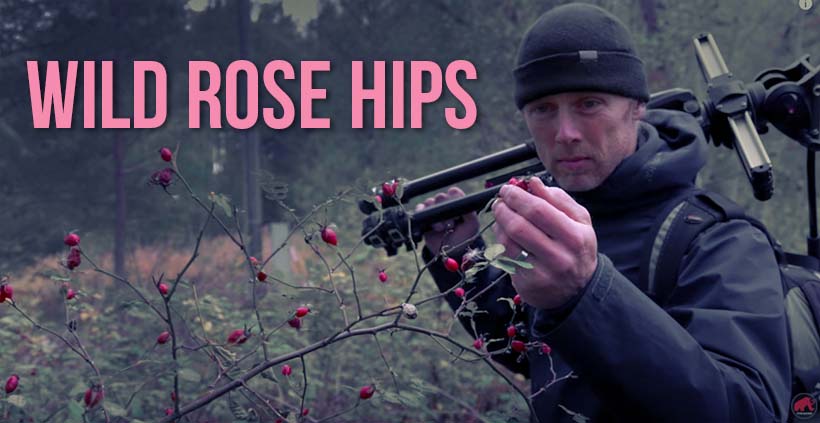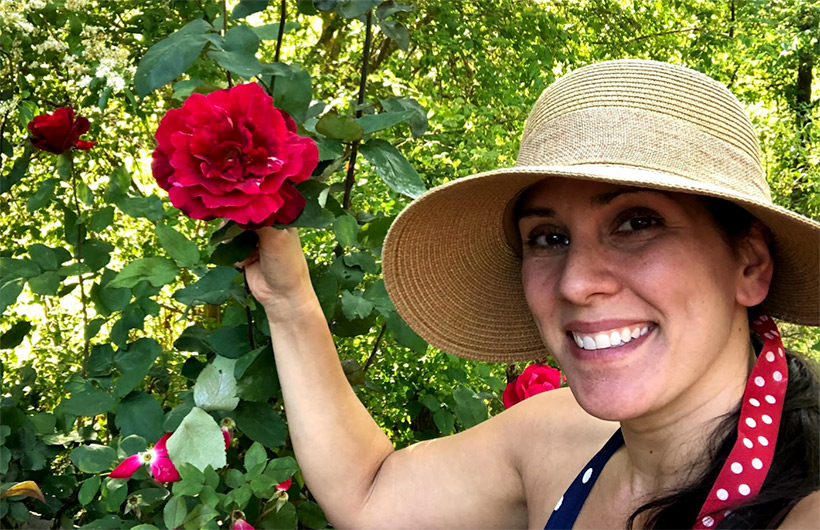Why Are Rose Hips SO Good For You? The Science of Antioxidants
You have probably heard a few times in your life that you should “eat your fruits and vegetables” but have you ever really thought about what makes plants so important to our diet? Well, it depends a little bit on which plants we talk about, and today we are going to dive into the role of antioxidants in our diet, using a little-known fruit with a lot of benefits: rose hips!

Plants are extremely diverse, and while many are edible, some of them (like daffodils), could kill you, and some (like persimmons) can be a bit of both depending on how they are eaten or prepared! Rose hips are edible and non-toxic, and are full of many compounds that are really good for us!
One of the main beneficial compounds found in rose hips are antioxidants. Antioxidants are found in many fruits and you will often see them promoted for their health benefits. Cranberries and blueberries for example are often labeled as “high in antioxidants!”. But what is the hype all about? What are antioxidants and why are antioxidants good for you?
What is an antioxidant?
Antioxidants are very important compounds that aid in neutralizing harmful free radicals in both plants and animals. Not all antioxidants are the exact same compound, but instead many different compounds have antioxidant properties.
Okay, so what is a free radical? Free radicals are unstable molecules that are formed in the body during certain processes or are taken in from outside sources. If too many of these free radicals accumulate in your body, whether they were produced naturally or taken in from the outside, they can be really harmful to your health.
There are many ways that free radicals are created or taken into our bodies. For example, when you are sick, your body will produce free radicals to kill bacteria or viruses, and when you exercise free radicals are naturally produced in the process. Free radicals can also be produced in plants when they photosynthesize or carry out other processes. Last, we can take in free radicals from sources like sunlight, air pollution, or cigarette smoke.
Free radicals are harmful because they are unstable compounds – lacking electrons in their outer rings – so they take electrons from other molecules, and in the process destroy that molecule! When an organism gets overloaded with free radicals it is called oxidative stress, which has been linked to a range of diseases, from type 2 diabetes to cataracts and even cancer.
This is where the antioxidants come in. Antioxidants are able to find and neutralize free radicals – known as “scavenging” – by donating some of their electrons and rendering the free radical harmless. Antioxidants are therefore key in making sure there is not an overaccumulation of free radicals in an organism, whether it’s a plant or an animal.
Now in terms of humans, our body will produce some antioxidants on its own, such as alpha lipoic acid and glutathione, but a lot of our important antioxidants come from the food we eat, especially from fruits. Some examples of antioxidants are phenolic acids, flavonoids, anthocyanins, carotenoids, and some vitamins, such as vitamin C and E.

Why do plants produce antioxidants?
So, as you can imagine, plants don’t produce antioxidants just so that we can benefit from eating them. There are various reasons that plants produce compounds with antioxidant properties.
Here are some examples of how antioxidants are important for plants:
- Plants produce phenols to prevent damage from reactive oxygen species (ROS) that are made as a byproduct of metabolic processes.
- Phenols also serve as a defense mechanism, to help prevent damage from herbivores, insects, and microorganisms.
- Vitamin C is an antioxidant that helps prevent damage from byproducts of photosynthesis (known as oxidative metabolites).
- Carotenoids are red, yellow, and orange pigments in plants that are used both in photosynthesis and to help protect the plants from potentially harmful byproducts of photosynthesis
Benefits of antioxidants in people
As mentioned before, antioxidants are crucial to helping maintain the right balance of free radicals in our bodies.
Phenols in particular, phenolic acids and flavonoids for example, are easily absorbed by people and have been shown to be key in reducing oxidative stress which helps prevent things like heart disease and cancer.
The phenolic compounds and high antioxidant capacity in rose hip extracts for example have been shown to help maintain blood sugar levels in diabetes patients!.
Carotenoids have also been proven to help reduce risk of disease, and they also make our food look much more attractive, which may not seem like a direct benefit but it sure does help us to eat more fruits and vegetables!
Something that is important to note here is that you should absolutely get your antioxidants from your food and not from supplements! Just like most things, too many antioxidants can be harmful and there is still no proof that antioxidant supplements prevent diseases. Additionally, for your body to properly absorb and use antioxidants, it also usually needs the combination of compounds that can be found in the food. So getting your vitamins, amino acids, antioxidants, and other important compounds is always better through a healthy and balanced diet.

Antioxidants in rose hips
There are many fruits that are known for their antioxidant content, but rose hips are particularly great! For starters, they have some of the highest concentration of vitamin C out there, up to 4000mg/100g in some cases, and are also packed full of phenolic acids, flavonoids, and carotenoids! This makes rose hips an excellent source for key antioxidants that your body needs to stay healthy!
Watch Rob and Jonas explore rose hips in Sweden in the video below and if you want to learn all about collecting and eating rose hips, check out this blog here!
































































































